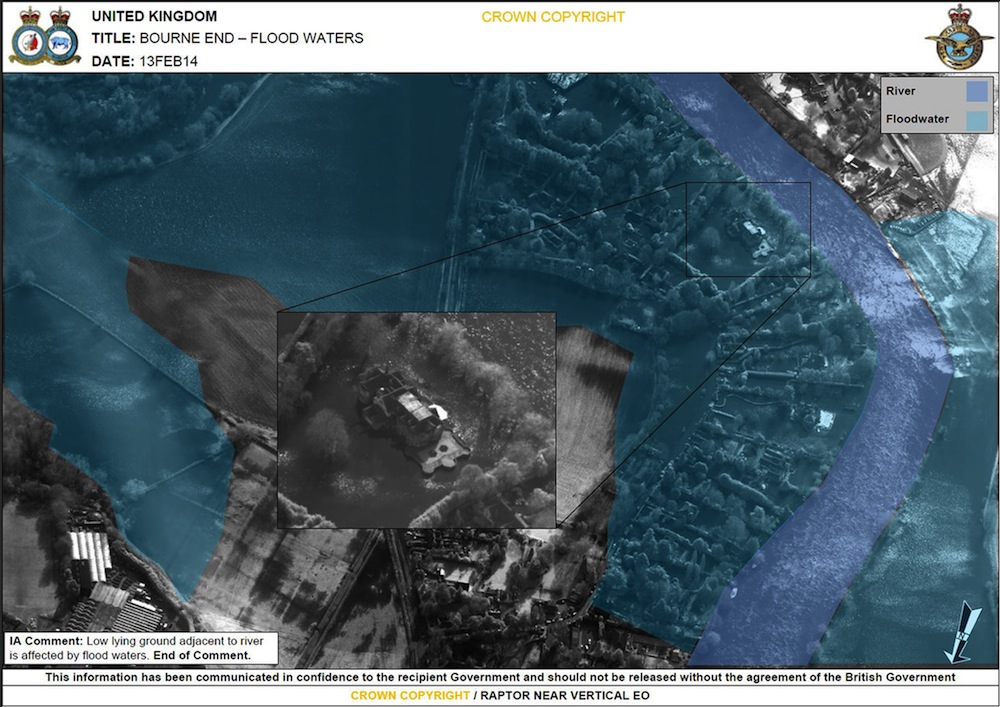Royal Air Force Combat Plane Aids UK Flood Recovery (Photos)

Photos of flooding taken by a Royal Air Force jet are aiding recovery in the United Kingdom after the Thames overflowed its banks this week.
The Tornado GR4 jet is equipped with a specialized photography pod called the Reconnaissance Airborne Pod for Tornado (RAPTOR). This tool enables the collection of high-resolution imagery showing flood-affected areas.
Almost 6,000 homes are flooded in the Thames Valley, and more flooding is expected as a winter storm brings more rain to England starting Friday (Feb. 14), according to CNN. As of Friday evening, the U.K.'s Met Office had issued 107 flood warnings and 15 severe flood warnings, as well as 156 flood alerts.
In combat, the RAPTOR enables the Tornado pilot to gather images of targets in both the visible spectrum and in infrared.
"This Tornado-borne surveillance capability is very much proven in a combat role in Afghanistan but its versatility is underlined by its use today, here at home, to support ongoing flood relief efforts," U.K. Secretary for Defense Philip Hammond said in a statement.
The images captured by the military plane show a large mansion surrounded by water in Bourne End, Buckinghamshire. Additional images are being processed by RAF analysts and will be handed over to civilian authorities.
Follow Stephanie Pappas on Twitter and Google+. Follow us @livescience, Facebook & Google+. Original article on Live Science.
Get the world’s most fascinating discoveries delivered straight to your inbox.

Stephanie Pappas is a contributing writer for Live Science, covering topics ranging from geoscience to archaeology to the human brain and behavior. She was previously a senior writer for Live Science but is now a freelancer based in Denver, Colorado, and regularly contributes to Scientific American and The Monitor, the monthly magazine of the American Psychological Association. Stephanie received a bachelor's degree in psychology from the University of South Carolina and a graduate certificate in science communication from the University of California, Santa Cruz.



